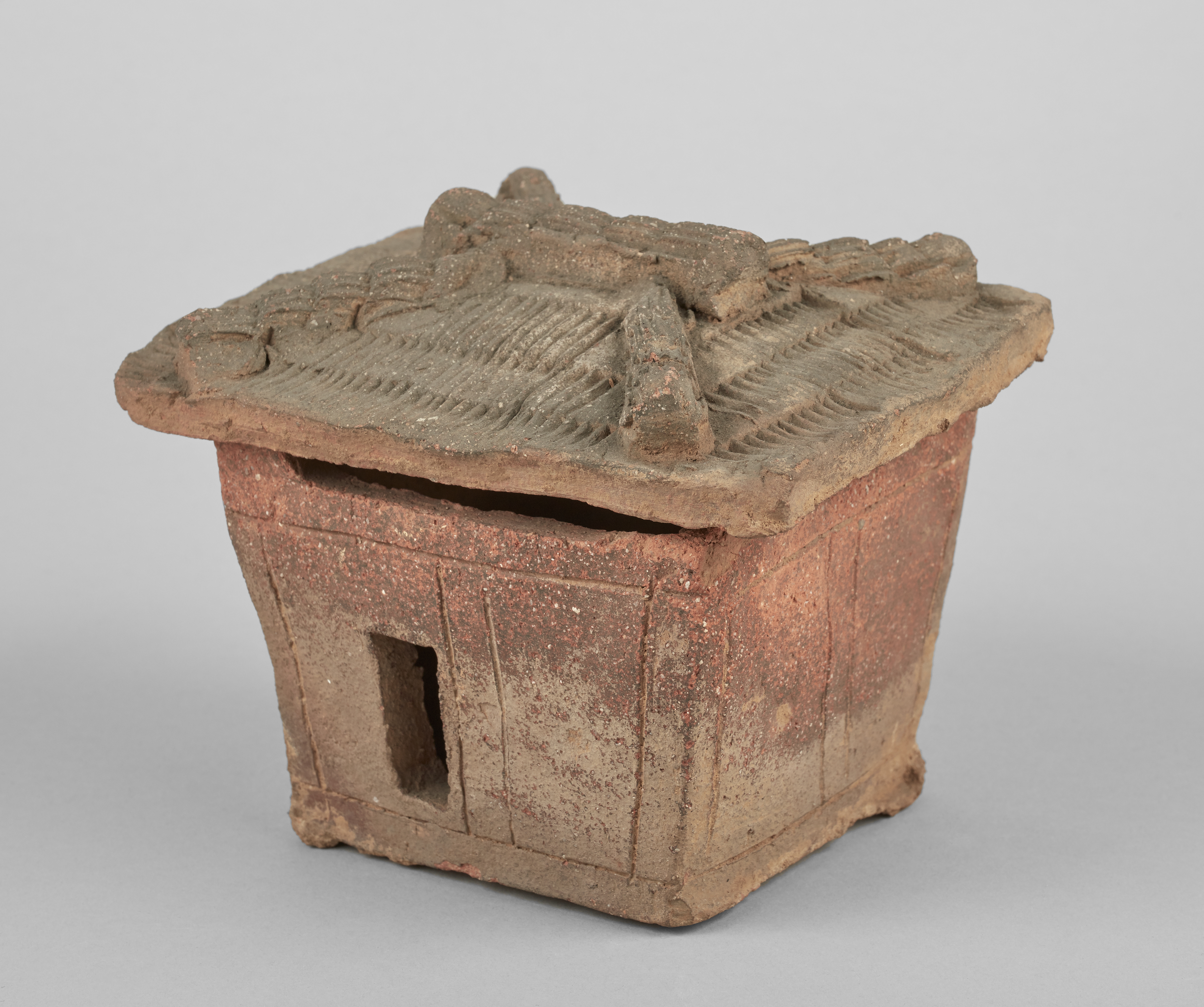
Modèle d'architecture
Terre cuite
Maquette
N.-V. 2 A1 /5
Don fouilles : Mission Janse Indochine (1934-1935)
M.C. 11162
After the rebellion led by the Trưng Sisters (40 - 43), quelled with much bloodshed, Chinese control and influence became more pronounced and the former Đông Sơn elite was made directly subject to the Chinese administration. This is clearly reflected in the furnishing of the tombs of the period, which contain objects that evolved out of the cross-fertilisation of Đông Sơn and Chinese traditions. The tombs of the Giao Chỉ period reproduce the Chinese model in use between the 1st and 5th centuries, in terms of the arrangement and equipment: certain objects were made especially for burial, as a symbolic reminder of the world of the living.
Architectural models belonged to this tradition, representing the source of wealth of the deceased landowners. The details of these miniature houses provide information about the architecture of the period: lines incised in the walls indicate that they consisted of a bamboo lattice covered with mud, fixed on a wooden structure of posts supported at the top and base by horizontal beams. The flared shape of the buildings protected the base of the walls from trickling water in rain. The rush-thatched roof was held together with bamboo ridges.
This small pavilion was part of a larger homestead. A low wall divides the space inside, and an oval hole indicates that this model was of the latrines.


